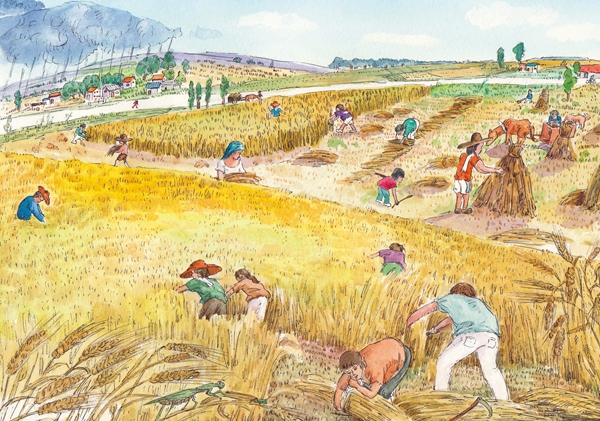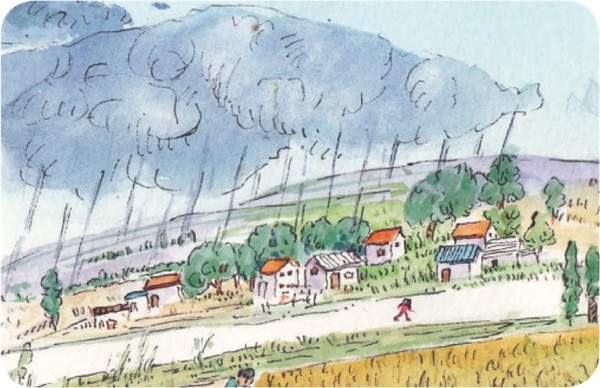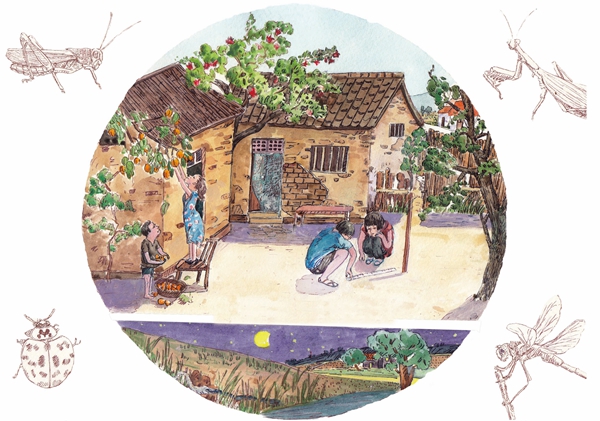Editor’s Note: Grain in Beard and the Summer Solstice are the 9th and 10th of the 24 solar terms. They come in mid-summer and are characterized by high temperature, ample rainfall or even floods and lots of amazing folk activities in China.
Editor’s Note: Grain in Beard and the Summer Solstice are the 9th and 10th of the 24 solar terms. They come in mid-summer and are characterized by high temperature, ample rainfall or even floods and lots of amazing folk activities in China.
Grain in Beard
Grain in Beard falls on June 5 on the Gregorian calendar this year. Wheat and barley are fully ripe at this time, while lots of other crops are ready to be sown. There’s plenty of rain at this time and the temperature rises sharply. Harvesting wheat becomes almost a race against time. If wheat collapses after heavy rain, it can go moldy or damp, making it inedible. Farmers are busy harvesting wheat, oilseed rape, and peas, and then sow corns and beans. They need to seize the moment to harvest.

As the hot summer weather approaches, spring flowers have almost disappeared. In some parts of China, there is a tradition of seeing off the Flower Goddess on the Grain in Beard day. People hold sacrificial ceremonies to show their gratitude to the Flower Goddess as well as their wish to see her again the following year.
During this period, temperatures rise sharply across China and sweltering heat sets in. Around the Yangtze and Huaihe river basins in southern China, heavy rain normally lasts for a month. The rain is called Plum Rain as it overlaps with the time when plums ripen. During the Plum Rain season, high humidity and high temperatures make clothes go moldy which is why it is also called “mould rain season.”

Albizia flowers bloom around Grain in Beard. The shape of this pink flower is like a fan, brightly colored and fragrant. Its leaves open during the day and fold up at night to enter “sleep mode.” When there are heavy rains and strong winds, the leaves also fold up to protect themselves from severe weather damage.
Dragon Boat Festival falls on the fifth day of the fifth Chinese lunar month. It normally happens around Grain in Beard. In most households, people eat Zongzi, a traditional Chinese food of glutinous rice stuffed with different fillings and wrapped in bamboo leaves or other large flat leaves. They are steamed or boiled before eating. Parents sometimes weave a bracelet of colored threads (usually in five different colors) to tie around the wrists of their children for good luck. Or they may make a Zongzi-shaped pendant with card and colored threads to hang around their children’s necks.
Dragon Boat Festival, Spring Festival, Qingming Festival and Mid-Autumn Festival are the four major traditional holidays of China. On Dragon Boat Festival there are many activities, such as watching dragon boat races and eating Zongzi.
The Summer Solstice
This is the 10th solar term. On this day, the sun beats down on the most northern point it could reach on earth. It shines almost directly on the Tropic of Cancer, and in the northern hemisphere the days are at their longest. After the Summer Solstice, hours of daylight in the northern hemisphere get shorter with each passing day. In many parts of China, people eat noodles on this day.
Around the Summer Solstice, in most parts of China temperatures are pretty high and there is abundant sunshine. Crops grow fast and they are in urgent need of water. At this time, rainfall plays an important role in agricultural yields. People normally say rain at this time is “as valuable as gold.” Usually the rainfall in the lower reaches of the Yangtze River and the area between the Yellow River and the Huaihe River can meet the demand of crops. After the Summer Solstice, thunderstorms often occur in the afternoons due to crosswinds. This kind of rain comes and goes quickly.

After the Summer Solstice, China enters a period of hot summer days (“dog days”) that lasts for over a month. In the north, the temperatures are high, there is plenty of sunshine, and rainfall keeps increasing. As crops grow vigorously, weeds and pests multiply, giving farmers the urgent task of eradicating weeds and using moderate pesticides to deal with pests.
Around the Summer Solstice, rainstorms frequent the lower reaches of the Yangtze River and the Yangtze-Huaihe river basins. There are frequent floods, posing a serious threat to people’s lives, property and safety. Therefore, great attention should be paid to flood prevention.
Apricots and pomegranates are in season at this time. Apricots are yellow and alluring, they can also be dried or made into preserves. Pomegranate flowers are red, the luckiest color in China.
According to Traditional Chinese Medicine, this is the time when the yang energy in the human body reaches its utmost, therefore, people need to protect this energy and prevent their bodies from getting sunstroke. With the approach of hot summer days, great attention should be paid to our diet. We need to change to a menu designed for hot summer, or we might suffer from imbalance of nutrition.
Chinese people traditionally eat dumplings on the day of the Winter Solstice while eating noodles on the day of the Summer Solstice. Cold noodles with sesame sauce and sliced cucumber adds coolness on a hot day, and drinking some sweet mung bean soup is very refreshing!
The hot summer weather might make people a bit distracted during the day. Well, our ancestors have given us some good advice: “As long as you maintain inner peace, you won’t feel the heat too much.”
(Compiled by China Today based on The Twenty-Four Solar Terms Published by Dolphin Books)